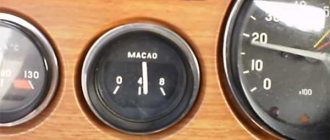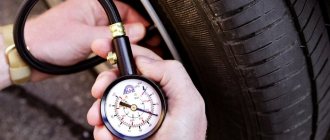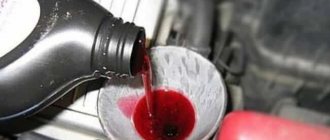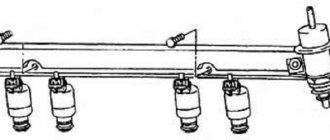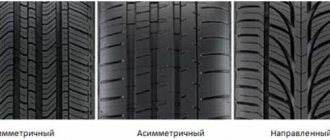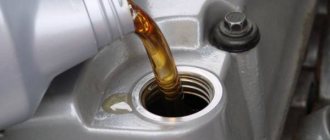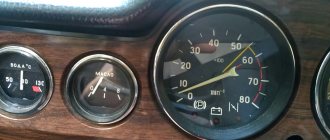The attitude towards maintaining tire pressure depends on the experience of the motorist. Almost everyone, even non-motorists, knows that they need to periodically inflate their tires. However, knowledge about this is not only general, but not even superficial. Despite the fact that each model has its own requirements and recommendations, car owners, as a rule, rely only on general data and even advice from others. Our review provides a table of tire pressures in winter. It demonstrates what results can be obtained, as well as all the necessary points that will help deal with this issue.
Features, regulatory values, risks
Most car owners perceive wheel pressure as a certain constant value that needs to be maintained from time to time. Moreover, if any person interested in the topic thinks about it, he will be able to list the main functions assigned to tires:
- maintaining balance and balance of a passenger vehicle;
- passive and active safety while driving;
- ease of riding;
- reduced tread wear.
Pressure measurement
How much attention the driver pays to his tires can be judged by the tread, which wears out in a characteristic way. Based on wear, you can identify the main problems that are typical for a passenger car in motion. But treads are only a reflection of the problems that the car experiences if the requirements are not met. The main risks of insufficient attention to these aspects are related to safety. In fact, by ignorance or oversight, by letting this problem take its course, you expose yourself and your loved ones to a significant risk of an accident.
Factors requiring adjustment of tire pressure
The point is also that depending on the nature of the movement and the characteristics of the load, different pressure is required. Here are the main factors that must be taken into account when correcting the degree of tire inflation:
- model, make and, accordingly, weight of the car;
- tire size;
- season – cold or warm;
- driving habits and road type;
- driving around the city or on the highway;
- number of passengers in the car;
- engine type: diesel or gasoline.
- presence of cargo in the car;
- wheel type: front or rear.
Tire pressure
You can find information on the recommended value for your model on the gas tank door or in any other place. We present several options in the photo. You need to be guided not by advice, but by the manufacturer’s recommendations. They are indicated, as a rule, for a temperature of 22◦C, that is, summer time. The pressure in winter tires R16, as well as R14 and R15, is reduced to improve the grip of the wheels on the road, in other words, they make the movement heavier, which is very convenient in snow and ice.
What's the result?
Our tests did not reveal any obvious punctures. This is good confirmation that there is no need to buy outright souvenir trinkets, which we immediately abandoned.
Which pressure gauge do you prefer - mechanical or electronic? Electronic ones immediately give the result, without requiring the owner to be able to navigate the intricacies of small scales, graduated in different units of measurement. Backlighting is also not a problem for them. True, the batteries can run out at the most inopportune moment, because the pressure gauge is doomed to lie in the depths of the trunk. But we liked AirLine APR-MD‑06 more than others: comfortable, cute, doesn’t lie. Just don’t forget to change the power source in time.
How safety decreases when changing tire parameters
The nature and measures to reduce road safety are well illustrated by the table, which reflects changes in the nature of the passive safety of a passenger car.
Tire pressure measurement
Table 1. Effect of tire pressure on safety and wear resistance:
| Changing the pumping indicator | Nature of influence |
| Normal | Vehicle safety and controllability Sufficient mileage Normal fuel consumption |
| — 0.5 bar | An increase in tread wear by 20%, the possible mileage is approximately reduced by 8 thousand km. |
| — 1 bar | Dangerous driving parameters, additional fuel consumption. |
| — 1.5 bar | The car may lose control of the road |
| — 2 bars | Braking distance on wet asphalt increases to 11 m. |
Note! A wheel that has been used in a poorly inflated condition may explode when the parameters are restored, and this can happen right on the road.
By the nature of wear, you can determine whether increased or decreased parameters usually occur on your model. This is well illustrated in the photo.
Pressure gauge
Of course, it is better to have your own pressure gauge that is known to be correct, but such a toy is not cheap.
Of course, it is better to have your own pressure gauge that is known to be correct, but such a toy is not cheap.
Short Game
If terrible ice has caught you wearing summer tires, say, at the dacha, and you have to drive some distance on a completely icy road by any means possible, then you should reduce the tire pressure to approximately 1.6 bar. Harmful to tires? Yes. But an accident will cost more. In addition, in such a situation you cannot expect high speed, and overheating of the tires at near-zero temperatures most likely will not happen.
I want to be a T-34!
Does everyone know what caused the excellent maneuverability of Soviet tanks? That's right: wide tracks, that is, low ground pressure. We, having an ordinary, non-all-wheel drive car, are also able to provide it with similar cross-country ability. If your car's wheels sink into sand, snow or sticky mud, it makes sense to reduce the tire pressure. And not only the driving wheels, but also the driven wheels.
Tire inflation parameters at summer temperatures
Standard wheel parameters and, accordingly, tread inflation are usually assessed at a summer temperature of 22°C; in cold weather, the parameters decrease, and with increased load and driving on the highway, they increase. Please note that the front wheels are pumped up 10% more, this is done so that the rear of the front-wheel drive model does not skid, and it maintains directional stability better.
Inflating tires on a car
With all-wheel drive, the wheels are inflated equally. This also directly depends on the weight distribution parameter. If it is 50*50, it is inflated to equal values, if there is a weight distribution or the vehicle is loaded, then the rear wheels are inflated more for freer movement.
In cold weather, for driving on a snowy road, it is recommended to increase the pumping; if driving on ice is meant, it is reduced. Thus, protectors are a completely reliable system for controlling directional stability, but only if you have certain knowledge that depends on a number of parameters. To illustrate what has been said, we present tables.
Table 2. The degree of inflation in wheels with and without a load using the example of some brands:
| Model and modification of a passenger model | Tire sizes | Inflation level | ||||
| Front | Rear | Standard | With load | |||
| Front | Rear | Front | Rear | |||
| Lanos 1.5i SE-SX & Auto | 175/70 R13 T | 2,2 | 2,2 | 2,2 | 2,2 | |
| Matiz 0.8i S-SE & Auto | 145/70 R13 T | 1,9 | 1,9 | 2,1 | 2,3 | |
| 155/65 R13 T | 1,9 | 1,9 | 2,1 | 2,3 | ||
| Nexia 1.5i GL & Auto | 175/70 R13 T | 2,6 | 2,1 | 2,6 | 2,1 | |
| Nexia 1.5i GLX-GTX & Auto | 185/80 R13 T | 2,2 | 2,4 | 2,2 | 2,4 | |
| VAZ 2104 | 165/80 R13 T | 1,6 | 2,1 | 1,7 | 2,3 | |
| 175/70 R13 T | 1,6 | 2,2 | 1,7 | 2,2 | ||
| VAZ 2108/09/99 | 165/80 R13 T 175/70 R13 T 155/80 R13 T | 1,9 | 1,9 | 2,0 | 2,0 | |
| 1,9 | 1,9 | 2,0 | 2,0 | |||
| VAZ 2110 and Lada Priora | 175/70 R13 T | 1,9 | 1,9 | 2,0 | 2,0 | |
| 175/65 R14 T | 2,0 | 2,0 | 2,1 | 2,1 | ||
| 185/60R14T | 2,0 | 2,0 | 2,1 | 2,1 | ||
The pressure in R15 tires in winter should be 2.3 and 2.6 (185/65 R15 - 2.4 and 2.6), in R16 - 2.3-2.8, but these values are advisory, exact numbers are always are unique to each model and are usually written on the fuel tank cap. However, it does not indicate what parameters should be in winter. Let's consider this issue in more detail.
Tire pressure characteristics
What pressure should the tires be?
Even the most savvy specialist cannot say for sure - determining how much air to pump into the wheel depends on many factors. Among the main characteristics that determine the exact value, the following are critical:
- Working volume. On some modifications of cars, standard and low pressure cylinders are used. The recommended pumping threshold depends on the type of design.
- Wheel load. An important parameter is the part of the vehicle’s mass pressing on the tire. There is a direct relationship here: high pressure requires increased resistance.
- Tread design. It is known that slick tires (bald tires) require more dense inflation than dirt versions. The difference can be most clearly observed on bicycles - the wheels of mountain models are inflated in the range from 3 to 4 kg, and road modifications stand out with a nominal value of 9-12 kg. This difference is justified by an increase in the load (cyclist’s weight) distributed per cm2 of the contact patch. Thus, narrow or slick tires require hard inflation.
- Factory recommendations. 90% of automobile tire manufacturers indicate what pressure each tire model is designed for. This approach prevents products from being inflated incorrectly, which could damage the product or negatively impact control.
- Road surface. For grippy roads (asphalt, concrete) there is no need for an increased contact patch between rubber and road material - the product is initially designed for such use. However, on primers, mud, sand or snow, it is recommended to use low pressure cylinders. A small amount of air inside the container makes the rubber softer, which helps it better grip loose surfaces and cover more uneven surfaces.
For a better understanding, we can give examples of the nominal pressure for hard surfaces in the wheels of some cars:
- VAZ 2101/15 – 1.8-2.2 kgf/cm2;
- KAMAZ/MAZ – 5.5-12 kgf/cm2;
- Daewo Lanos - 2.3 kgf/cm2.
Important! Maintaining optimal pressure inside the wheels of a car and similar equipment is critical to maintaining a given tire contact patch with the road surface. If the standard parameters are violated, the service life and grip of the product are reduced.
The degree of tire inflation in the cold season
How to calculate the degree of tire inflation in winter, based on the manufacturer’s official data. Of course, it is better to use the official recommendations of the car manufacturer or service, but you can be guided by general theoretical knowledge.
The general theory is related to the physics of gaseous media. What does it mean? As the temperature drops, the degree of inflation also decreases, so to improve cross-country ability it is necessary to inflate the tread. You can adhere to the following recommendations:
- when the temperature decreases, to maintain or improve the tire's cross-country ability, the tire should be 0.1-0.2 units more;
- if you need to maintain controllability in icy conditions, the parameters remain the same as in the summer, to a lesser extent this applies to the R16;
- if the weight distribution is the same, the products are inflated equally, while at maximum load the rear group is inflated by 0.2;
- in R14 tires the pressure is within 2.0 bar, in other sizes, respectively, less or more (R16);
- You can pump up the wheels that are driving more.
Tire pressure measurement
You can determine how correctly you select the parameters in winter after passing time on the tread. With normal inflation parameters the tread will have minimal damage. You can see the picture above.
If the wheel is overinflated
An overinflated tire becomes too hard. It rolls easily, but like a flat tire, it has insufficient grip on the road, and this is fraught with accidents. The car will jump excessively, increasing the load on the body and suspension elements, and if it gets into a hole, the tire may simply burst.
When the machine is heavily loaded, it is not recommended to greatly increase the tire pressure, since all of the above risks can only intensify.

